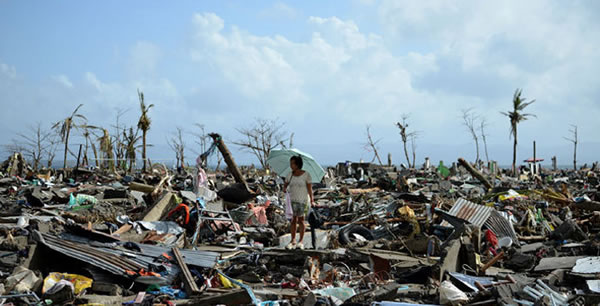
From TIME magazine’s article, Stop Catastrophizing Relief Efforts in the Philippines:
When television crews race large cargo ships with airplanes and helicopters, the cameras will always win. Journalists will report on the gap between supply and demand. They will show the faces of people in need of Western largesse. They will turn isolated incidents of foraging and removal of goods from a truck or warehouse into a report on rampant looting.
Here is where the reports go very wrong. According to a friend who has worked in Haiti and the Philippines:
“What happens when media talk up security issues is that aid agencies get worried about security of distributions, so they hold off until they have adequate security support. The velocity of distribution is dramatically slowed down. Scaremongering undermines the relief effort.”
This dynamic happened in Haiti, and it’s happening here.
…
The people of the Philippines are at risk of a multitude of disasters every year: earthquakes, tsunami, cyclones, floods, landslides and volcanic eruptions. The whole nation — government ministries, private-sector companies, the diaspora and civil-society organizations — has learned a great deal about how to respond to a typhoon.
…
What is different with Supertyphoon Haiyan (called Yolanda in the Philippines) is the unexpected level of storm surge and flooding, combined with sustained winds that exceeded 196 m.p.h. (315 km/h) with gusts far higher. The government is struggling to reach communities hit by one of the strongest storms ever to make landfall. Like the families I met in Staten Island after Superstorm Sandy, it seems that the water came in so fast that there was not time to flee, and the surge swelled well beyond what any city could survive. Six Filipino broadcasters risked their lives to keep Aksyon Radyo Tacloban DYVL running in Tacloban so that their listeners would know what was happening with the storm. Water filled the radio station in 10 seconds. Only one of their bodies has been found.
When journalists focus on looting and slow aid delivery, they miss the point. Information is aid. Their reports are part of weaving the fabric of a global Filipino community back together after a typhoon tore through their hometowns. By showing communities coming together, journalists can amplify the dynamics that save lives.
Be sure to read the whole article.
Want to help? One good organization to give to is the Philippine Red Cross.
Thanks to “Dr. D” for the link!